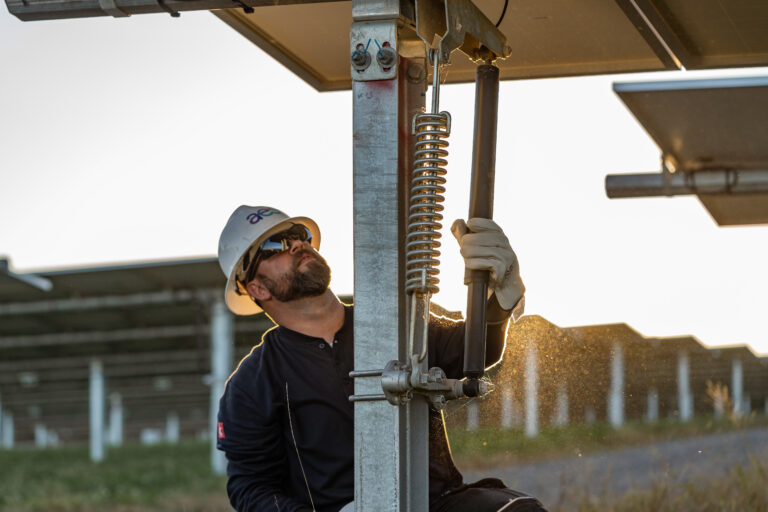Heat Illness Prevention
|
Heat-Related Injury Prevention Training Module: Download ↗ |
|
Heat-Related Illness Preference Quick Reference Card: Download ↗ |
|
Heat Awareness and Tracking Plan: Download ↗ |
Creating a culture of safety is a priority for the U.S. clean energy industry.
Key priorities for ensuring workplace safety include:
ACP engages regularly with federal agencies, including the Center for Disease Control’s National Institute for Occupational Safety and Health (NIOSH), the Department of Labor’s Occupational Safety and Health Administration (OSHA) and the Bureau of Safety and Environmental Enforcement (BSEE).
ACP works closely with OSHA, BSEE, and NIOSH to improve worker health and safety, and to better inform the clean energy industry about these agencies and the agencies about the clean energy industry.
If you are interested in further involvement in ACP’s environmental, health, and safety work, please email [email protected].

ACP offers a wide variety of tools and educational materials to help ensure safe workplaces for clean energy workers.
|
Heat-Related Injury Prevention Training Module: Download ↗ |
|
Heat-Related Illness Preference Quick Reference Card: Download ↗ |
|
Heat Awareness and Tracking Plan: Download ↗ |
The people of the clean energy workforce are the heartbeat of our industry, and the importance of their safety cannot be understated. Learning from past incidents and near misses helps us prevent future ones.
To support this effort, ACP has launched its Safety First Learnings to share ongoing learnings across the clean energy industry. Use the form below to submit incidents and near misses, so that the entire industry can quickly address underlying risks that could lead to harm for workers in the industry. Submitted reports are kept anonymous and distributed to ACP members on a biweekly basis.
For ACP Members interested, please email [email protected].
This guidance has been developed to provide a framework for how to execute safe transfer of personnel in the American Offshore Wind Industry. It indicates where further good practices or deviation is required in the American Offshore Wind Industry to provide a framework for how to execute safe transfers. This document also provides recommendations about the split of responsibilities within an organization to properly plan for and execute transfers.
This guidance takes into consideration the following transfer scenarios:
This resource is free for members – sign in and view product details here. For non-members interested in this resource, please contact [email protected].
The wind industry partially repowered over 12 gigawatts of land-based wind energy facilities in the U.S. between 2015–2021. While the focus on repowering has traditionally been centered around market drivers and economics, this report highlights how to ensure the work is done safely.
In this report, you’ll find lessons learned for development, construction, and operation of repowered facilities from the companies who have done the work. ACP hopes that by sharing these experiences more broadly, we can help with the industry’s continuous improvement on safety performance.